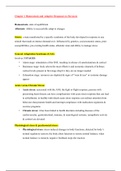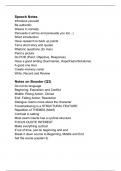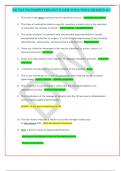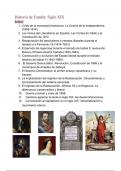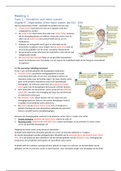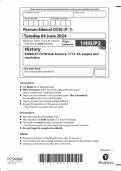Lean Thinking: all the articles combined
- By: Nigel Wood
This artile is in the frst a series introduiing the ioniept on Lean Thinking. The aim is to take
readers through the appliiaton on lean methodology and tools nor the improvement on
supply ihains. The iontent will be a mix on theory and praitial examples.
What is Lean Thinking?
- At a high level it is a way of giving people at all levels of an organizaton the skills and
a shared means of thinking to systematially drive out waste by designing beter
ways of working, improving ionneitons and easing fows within supply ihains.
- By eliminatng waste, we ian simultaneously reduie our iosts, make beter use of
our resouries and deliver beter iustomer value.
Understanding Waste
The Japanese use the term muda. In English we translate this as waste. Within Lean Thinking,
this waste is defned as any human aitvity, whiih absorbs resouries but ireates no value.
Taiiihi Ohno, the Toyota exeiutve identfed seven types of muda.
So, the seven muda’s are: overproduiton, defeits, unneiessary moton, unneiessary
inventory, inappropriate proiessing, transportng, and waitng.
- Womaik and Jones added an eight waste, namely the design of goods and serviies
that do not meet the iustomer’s needs.
Peter Druiker “There is nothing so useless as doing efiiently that whiih should not be
done at all”
,Waste eliminaton is the aim of Lean Thinking and they ireated 5 priniiples that you need to
follow in order to eliminate waste.
Principle 1: Specify Value by Product
Identfy what the iustomer aitually wants. You should ask yourself the following uueston:
“Would I pay for something I did not want?”. You would iertainly not be happy paying for
any of the wastes identfed above, so why should your foius be diferent?
But what is it that iustomers aitually value? We have looked at this in terms of both the
ionsumer and our internal iustomers.
Consumer (external)
- Produit is always available for them to purihase
- Produit ‘does what it says on the tn’
- Produit is defeit free
- Produit is value for money
- Buying the produit makes them feel good
values are based around the produit
Internal iustomer
- Stoik is always available to meet marketng and merihandising plans
- We are responsive to market ionditons
- Our produits are perfeit in uuality
- There is speedy introduiton of new produits
- There is a hassle-free working relatonship
- We produie at the lowest produit iosts
values are based around the serviie we provide through the supply ihain.
Produit Related Values
Dr Noriaki Kano has developed a model by whiih it is possible to identfy the faitors whiih
iustomers look for when they make purihasing deiisions. These, he defnes as Basii (‘must
be’), Performanie (‘more is beter’), and Delighter (‘exiitement’).
- Basii naitor
, This is something the iustomer expeits to be present as a mater of iourse. If it is
not, the iustomer will be dissatsfed or disgusted.
- Pernormanie naitor
The absenie of a performanie faitor is likely to result in disgust; however, full
implementaton ian result in delight. Performanie faitors are best identfed using
market surveys. It is iritial that those iausing dissatsfaiton are uuiikly identfed
and remedied.
- Delighter naitor
A delighter is something the iustomer just does not expeit and will iause inireasing
delight if present. Unfortunately for manufaiturers and serviie providers Kano
faitors do not remain stati. Performanie and delighter will inevitable migrate to
being basii as iustomer expeitatons grow.
Supply Chain Values
We will now turn our atenton to fulflling values of iustomers other than ionsumers. As
identfed earlier, these usually relate to the performanie of the supply ihain. Reliability,
fexibility and iost efeitveness are key issues. Ultmately, these will be aihieved by applying
fow and pull teihniuues. A ionvenient approaih is to identfy the produits ian be ilassifed
as Runners, Repeaters or Strangers. This is an indiiaton as to the prediitability of the
freuueniy and uuantty of demand.
Not surprisingly, Runners are the easiest to supply as planning is uniompliiated and ian be
aihieved by the use of iyilii sihedules. Repeaters are a litle bit more iomplex, but are stll
easily handled. Strangers ofer the biggest ihallenge. You may be able to treat these as
make-to-order items, assuming your lead tmes are aiieptable to your iustomer.
- Demand Amplifiaton the way how the supply ihain is responding to demand.
The demand of produits is ploted in a tme period, along with foreiasts, produiton
plans, inventory, eti. To see whiih element is most out of iontrol, ‘noise to signal
rato’ is used. The larger the deviaton from 1, the more out of iontrol the supply
ihain.
Important ioniepts in Lean Glossary 2:
Five S’s 5 Japanese terms beginning with s, whiih all ireate a workplaie suited for visual
iontrol and lean produiton. Seiri (separate needed tools, parts and instruiton from
unneeded materials), Seiton (neatly arrange and identfy partsstools), Seiso (ionduit a ilean-
up iampaign), Seitketsu (to ionduit Seiri, Seiton, and Seiso freuuently), and Shitsuke (to
form the habit of following the frst four S’s).
Five Why’s asking why fve tmes whenever you eniounter a problem.
Flow the progressive aihievement of tasks along the value stream



